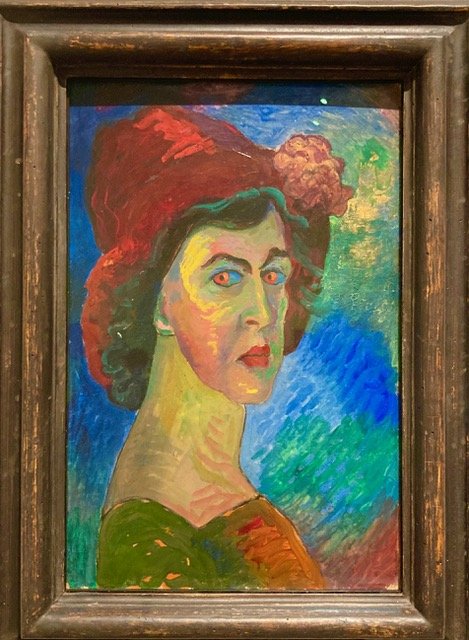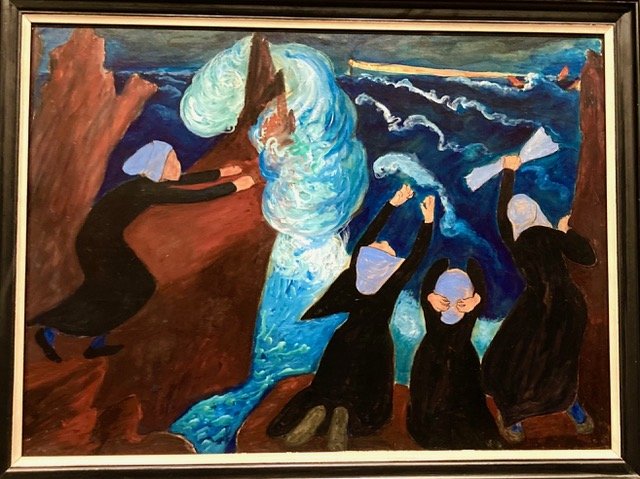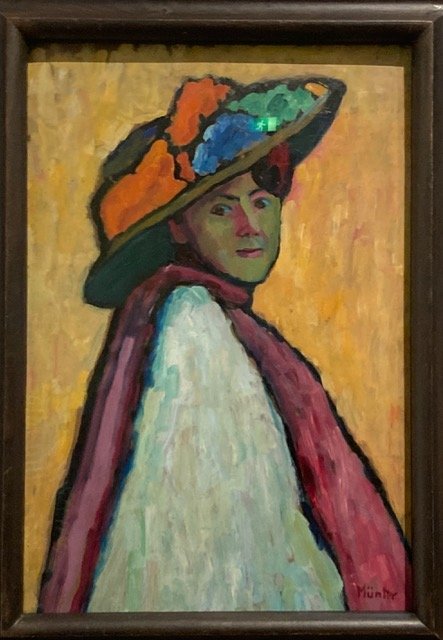Expressionists at Tate Modern
The dynamic talent of Marianne Werefkin
In clashing colours, Self Portrait (c1910) by Marianne Werefkin has a magisterial glow
There are some famous names in the Tate’s current Expressionist show – Kandinsky, Delaunay, Klee – but for me, Marianne Werefkin is the outstanding artist in the European collective of the early 1900s known as the Blue Rider. Her paintings, of subjects from portraits to theatre shows and momentous landscapes, are alive with vibrant, often shocking colour, movement and passion.
In her Self Portrait (c1910), she is turning towards the viewer with a magisterial glower, her eyes painted in luminous orange and blue, like a red-eyed snapshot. Bright yellow and green highlights accent her long cheekbones, and her dark hair is framed by a scarlet cloche – a real colour fest.
There is a dynamic sense of movement in The Skaters (1911)
The Skaters (1911) is a brilliant study of group choreography. On a crowded ice rink, dark blue under a greeny-white moon, shadowy figures swirl around, their edges blurred to create a dynamic sense of animation. A floodlit sports hall glows orange against the night sky, setting off the skaters’ silhouettes. Werefkin creates an eeriness that’s exciting and disturbing.
The Storm (1907) was described as “peculiar and beautiful” when it appeared in the Second Izdebsky Salon, an exhibition that toured what is now Ukraine in 1911.
There’s more sense of the almighty power of nature in The Prayer (1910), in which a tiny, narrow white chapel stands on a green Alpine hill, its front open to reveal a statue of Christ on the cross. His figure is simply painted, almost naïve, with a white loincloth. Two people bend in prayer, but your eye is irresistibly led away to the towering white peaks in the background, steep and foreboding.
Similarly, The Storm (1907) depicts the wrath of the sea and the despair of the fishermen’s wives who kneel in supplication before the waves. It’s the rear-view angle Werefkin uses – no faces are visible, only backs, headscarves and outstretched arms – that creates that feeling of helplessness in the face of nature’s force.
Portrait of Marianne Werefkin (1909), Gabriele Münter
Werefkin was herself painted by other members of the Blue Rider, notably by Gabriele Münter in a 1909 portrait (above) in which the extravagantly dressed Werefkin wears a hat “as big as a wagon wheel, on which there was room for all sorts of things”. Painted in oil on card, with such confident freedom of expression, colour, line and composition, this picture captures the intense creativity of the group at this time.
Other artists of the 16 in the collective who published The Blue Rider Almanac include Wassily Kandinsky, Alexej Jawlensky, Elisabeth Epstein and Paul Klee. Their work springs from a brief but intense period before the First World War that presages the turmoil of Cubism, Constructivism, Fauvism and Abstraction, full of experimentation and spiritual searching. The exhibition is fascinating, and unmissable.



